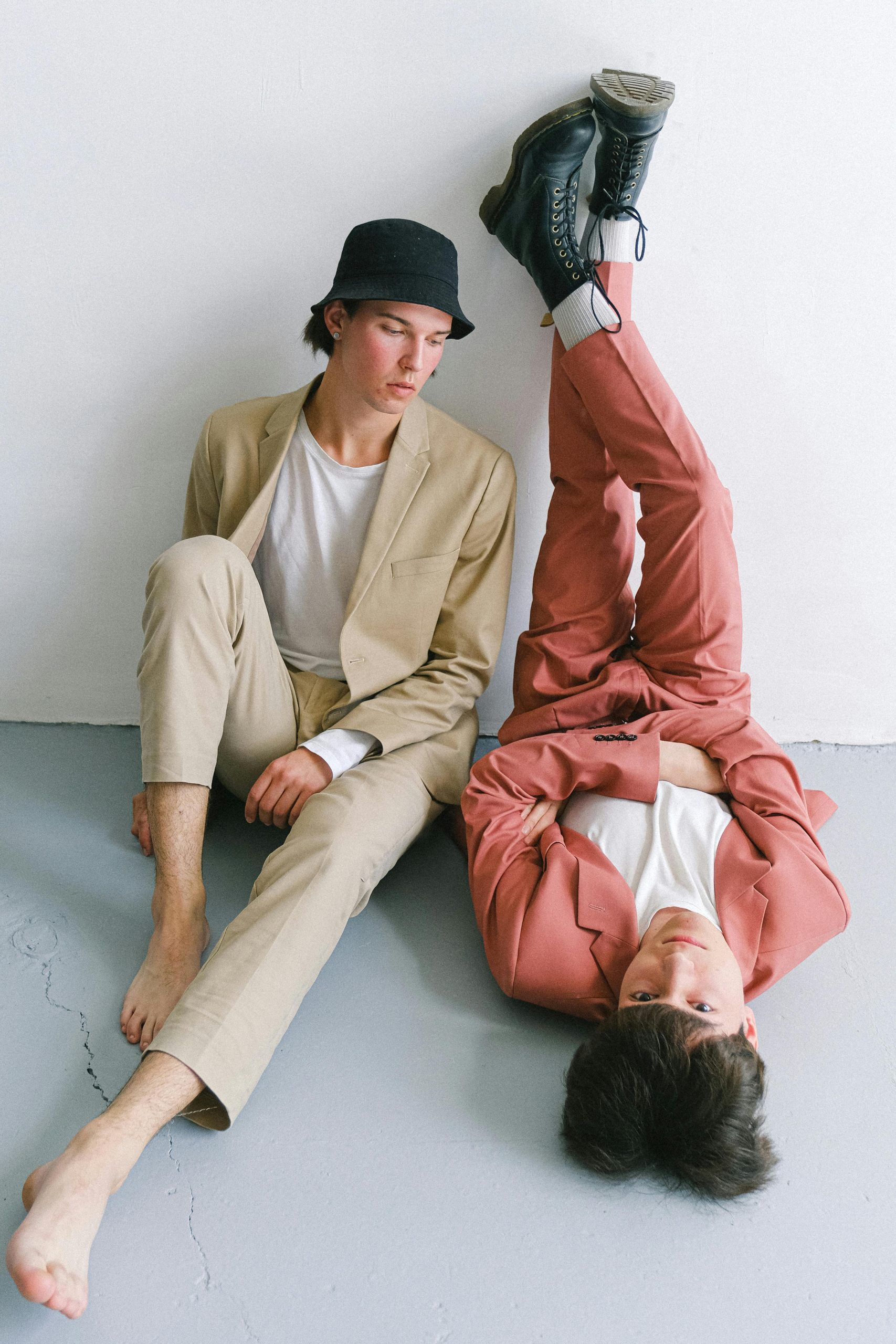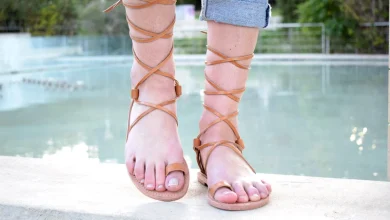
The Revolutionary Comfort of Barefoot Shoes
Key Takeaways:
- Barefoot shoes mimic the sensation of walking barefoot and allow for natural foot movement.
- Wearing barefoot shoes can strengthen foot and lower limb muscles, improve balance and stability, and promote better posture and alignment.
- Excessive cushioning in traditional shoes can lead to a loss of sensory feedback and alter natural foot mechanics.
- Barefoot shoes offer minimal cushioning, promote better foot proprioception, and reduce the risk of falls.
- Barefoot shoes can help improve posture by allowing the feet to lie flat on the ground and aligning the ankles, knees, hips, and spine.
- Consider factors like fit, width and length, toe box shape, and intended use when choosing the right pair of barefoot shoes.
- Popular types of barefoot shoes include running shoes, trail shoes, lifestyle shoes, and sandals.
- Reputable brands for barefoot shoes include Vibram FiveFingers, Xero Shoes, Merrell Vapor Glove, and Vivobarefoot.
- Barefoot shoes can enhance agility, balance, and athletic performance while reducing the risk of injuries.
- Transition gradually from traditional shoes to barefoot shoes and incorporate them into work and daily activities for maximum comfort and foot health.
- There are fashionable barefoot shoe options available that prioritize foot health, style, and function.
The Science Behind Barefoot Shoes
When it comes to footwear, the saying “less is more” couldn’t be more fitting. Barefoot shoes, also known as minimalist shoes, have gained popularity in recent years for their unique design that allows for natural foot movement. These shoes mimic the sensation of walking barefoot, providing numerous benefits for foot health and overall well-being.
The Benefits of Natural Foot Movement
Our feet are complex structures designed to provide stability, absorb shock, and propel us forward. However, traditional cushioned shoes can limit the natural movement of our feet, leading to weakened muscles and imbalances. Barefoot shoes encourage a more natural gait by allowing your feet to move freely.
By wearing barefoot shoes, you can strengthen the muscles in your feet and lower limbs, improving balance and stability. This enhanced strength and stability can help prevent common foot problems such as plantar fasciitis, Achilles tendonitis, and shin splints. Additionally, natural foot movement can promote better posture and alignment throughout the body.
The Impact of Cushioned Shoes on Foot Health
Many mainstream shoes on the market today are heavily cushioned, intended to provide comfort and support. However, research has shown that excessive cushioning can actually be detrimental to foot health in the long run.
Too much cushioning in shoes can lead to a loss of sensory feedback from the feet to the brain. This loss of feedback can result in inefficient movement patterns, as the feet are unable to properly sense the ground and make necessary adjustments. Additionally, cushioned shoes can create an artificial heel-to-toe drop, altering natural foot mechanics and potentially causing foot and ankle problems.
Barefoot shoes, on the other hand, offer a minimal sole with little to no cushioning. This allows for a more natural sensory experience, enabling your feet to work as they were intended. The lack of cushioning also promotes better foot proprioception, or the awareness of your body’s position in space. This increased proprioception can improve balance and reduce the risk of falls.
How Barefoot Shoes Promote Better Posture
Posture plays a crucial role in overall health and well-being. Poor posture can lead to musculoskeletal imbalances, pain, and decreased athletic performance. Barefoot shoes can help improve posture by encouraging a more natural alignment of the feet, ankles, and spine.
When wearing cushioned shoes with elevated heels, the body’s weight tends to shift forward, placing excessive pressure on the balls of the feet and causing the pelvis to tilt anteriorly. This anterior pelvic tilt can lead to a forward head position, rounded shoulders, and a curved lower back.
On the other hand, barefoot shoes promote a more neutral posture by allowing the feet to lie flat on the ground. This aligns the ankles, knees, hips, and spine, creating a more stable and balanced stance. Improved posture not only reduces the risk of injury but also enhances breathing, circulation, and overall biomechanical efficiency.
Choosing the Right Barefoot Shoes for You
With the increasing popularity of barefoot shoes, there is now a wide variety of options available to suit different preferences and needs. Here are some factors to consider when choosing the right pair of barefoot shoes for you:
Finding the Correct Fit for Maximum Comfort
Proper fit is crucial when it comes to barefoot shoes. Unlike traditional shoes, barefoot shoes have a unique design that allows for the natural splay of toes and freedom of movement. To ensure maximum comfort, it is essential to find the correct fit.
When trying on barefoot shoes, pay attention to the width and length of the shoes. Your toes should be able to splay naturally within the shoe without feeling cramped. Additionally, there should be a small amount of space (about 1/4 to 1/2 inch) between your longest toe and the end of the shoe to allow for natural movement.
It is also important to consider the shape of the shoe’s toe box. Look for shoes with a wide and spacious toe box that allows your toes to spread out comfortably. This can help prevent issues such as bunions and hammertoes caused by narrow and constricting footwear.
The Different Types of Barefoot Shoes Available
There are various types of barefoot shoes available on the market, each with its own unique features and benefits. Here are some popular types of barefoot shoes to consider:
1. Barefoot Running Shoes: Designed specifically for running, these shoes provide minimal cushioning and support, allowing for a more natural running experience. They often have thin soles and flexible constructions to enhance ground feel and proprioception.
2. Barefoot Trail Shoes: Similar to barefoot running shoes, trail shoes are designed for off-road running and hiking. They provide additional traction and protection to navigate rough terrains while still allowing for natural foot movement.
3. Barefoot Lifestyle Shoes: These shoes are designed for everyday wear and provide the benefits of barefoot shoes in a more casual style. They are suitable for activities such as walking, light hiking, and general use.
4. Barefoot Sandals: As the name suggests, barefoot sandals are minimalistic footwear that provides a barefoot feel while offering some protection. They consist of a sole and straps to keep them in place, allowing your feet to breathe and move freely.
Top Brands and Styles to Consider
When it comes to barefoot shoes, there are several reputable brands that offer high-quality options. Here are some top brands and styles to consider:
1. Vibram FiveFingers: Known for their distinctive toe shoe design, Vibram FiveFingers offers a wide range of barefoot shoes for various activities. Their shoes provide excellent ground feel and flexibility.
2. Xero Shoes: Xero Shoes specializes in minimalist footwear, including barefoot running sandals and lifestyle shoes. Their shoes offer maximum flexibility and a lightweight design.
3. Merrell Vapor Glove: The Merrell Vapor Glove is a popular barefoot shoe for both running and everyday wear. It features a zero-drop design and a thin sole for optimal ground feel.
4. Vivobarefoot: Vivobarefoot offers a variety of barefoot shoes designed for different activities, including running, hiking, and everyday wear. Their shoes prioritize natural foot movement and provide ample room for toe splay.
It is important to try on various brands and styles to find the pair that suits you best. Consider factors such as fit, flexibility, and intended use when making your selection.
Improving Athletic Performance with Barefoot Shoes
Barefoot shoes are not just limited to everyday wear. They can also significantly enhance athletic performance across various sports and activities. Here are some ways barefoot shoes can improve your performance:
Enhancing Agility and Balance in Sports
Agility and balance are essential for success in many sports, including soccer, basketball, and tennis. Barefoot shoes promote better proprioception and foot muscle activation, leading to improved agility and balance.
When wearing traditional cushioned shoes, the thick soles can dampen the sensory feedback from the feet, making it more challenging to react quickly and adjust movements. In contrast, barefoot shoes provide a closer connection to the ground, allowing athletes to better sense and respond to changes in terrain or opponents.
By training and competing in barefoot shoes, athletes can develop stronger and more stable foot and ankle muscles. This can help prevent ankle sprains and other common lower limb injuries while also improving overall performance on the field or court.
The Role of Barefoot Shoes in Injury Prevention
Injuries are a common setback for athletes, often resulting from overuse, improper technique, or inadequate footwear. Barefoot shoes can play a significant role in injury prevention by promoting proper foot mechanics and reducing the risk of common sports-related injuries.
When wearing traditional shoes, the cushioning and support provided can mask poor technique or form, increasing the chances of injury. With barefoot shoes, there is no room to hide inefficient movement patterns. This encourages athletes to adopt proper form, reducing the stress on joints, tendons, and ligaments.
Barefoot shoes also strengthen the muscles and connective tissues in the feet and lower limbs, making them more resistant to injury. This increased strength and flexibility can help absorb shock, distribute forces more evenly, and reduce the risk of overuse injuries such as stress fractures and tendinitis.
Unlocking Your True Athletic Potential
When athletes transition to barefoot shoes, they often discover a newfound level of performance. By allowing the feet to move naturally and engaging the intrinsic muscles, barefoot shoes can unlock an athlete’s true potential.
The increased foot and ankle strength gained from wearing barefoot shoes can improve explosive movements such as jumping and sprinting. The enhanced proprioception and sensory feedback can also result in precise footwork and quicker reaction times.
Furthermore, barefoot shoes promote better running mechanics, encouraging a forefoot or midfoot strike rather than a heel strike. This promotes a more efficient transfer of energy and reduces the risk of impact-related injuries. As a result, athletes can improve their speed, endurance, and overall performance.
Incorporating Barefoot Shoes into Your Everyday Life
Barefoot shoes are not just for athletes; they can be incorporated into your everyday life for maximum comfort and foot health. Here are some tips for integrating barefoot shoes into your daily routine:
Transitioning from Traditional Shoes to Barefoot
If you have been wearing traditional cushioned shoes for an extended period, it is important to transition gradually to barefoot shoes to allow your feet to adapt. Start by wearing your barefoot shoes for short periods during low-impact activities such as walking or light exercise.
As your feet adjust, gradually increase the duration and intensity of wearing barefoot shoes. Listen to your body and take breaks if you experience any discomfort or fatigue. It may take some time for your muscles and connective tissues to strengthen and adapt to the new movement patterns.
Wearing Barefoot Shoes for Work and Daily Activities
Barefoot shoes can provide exceptional comfort and support throughout your workday and daily activities. Many brands offer barefoot shoes with a more professional or stylish appearance, allowing you to enjoy the benefits of barefoot footwear without compromising on style.
Whether you work in an office, on your feet all day, or have a physically demanding job, barefoot shoes can help improve posture, reduce fatigue, and minimize the risk of foot-related issues. Look for styles that are appropriate for your workplace while still providing the necessary comfort and flexibility.
The Fashionable Side of Barefoot Shoes
While comfort and foot health are the primary reasons to choose barefoot shoes, it doesn’t mean you have to sacrifice style. In recent years, many barefoot shoe brands have expanded their offerings to include fashionable and trendy designs.
From casual sneakers to elegant flats, there are barefoot shoe options available for every occasion. These stylish shoes not only prioritize foot health but also allow you to express your personal style and elevate your fashion game.
When shopping for fashionable barefoot shoes, ensure they still meet the principles of minimalism, including a wide toe box, flexible sole, and zero-drop design. This way, you can enjoy both fashion and function without compromising on foot health or comfort.
In conclusion, barefoot shoes offer a revolutionary approach to footwear, prioritizing natural foot movement, and promoting foot health. By allowing your feet to move freely and engaging the intrinsic muscles, barefoot shoes can enhance posture, balance, and overall athletic performance.
When choosing barefoot shoes, consider factors such as fit, intended use, and top brands to find the pair that suits you best. Integrate barefoot shoes into your everyday life by transitioning gradually, wearing them for different activities, and exploring fashionable options.
Embrace the comfort and benefits of barefoot shoes, and experience a new level of footwear revolution!
FAQ
Question: Can wearing barefoot shoes prevent common foot problems? – Wearing barefoot shoes can strengthen foot and lower limb muscles, improve balance and stability, and promote better posture and alignment. This can help prevent common foot problems such as plantar fasciitis, Achilles tendonitis, and shin splints.
Question: How do barefoot shoes promote better posture? – Barefoot shoes allow the feet to lie flat on the ground, aligning the ankles, knees, hips, and spine. This promotes a more neutral posture, reducing the risk of musculoskeletal imbalances, pain, and decreased athletic performance.
Question: Are there different types of barefoot shoes available? – Yes, there are various types of barefoot shoes available, including barefoot running shoes, trail shoes, lifestyle shoes, and sandals. Each type is designed for different activities and purposes.
Question: What should I consider when choosing the right barefoot shoes? – Factors to consider when choosing barefoot shoes include fit, width and length, toe box shape, and intended use. It is important to find a pair that allows for natural foot movement and provides maximum comfort.
Question: Which brands are reputable for barefoot shoes? – Reputable brands for barefoot shoes include Vibram FiveFingers, Xero Shoes, Merrell Vapor Glove, and Vivobarefoot. These brands offer high-quality barefoot shoes with a focus on natural foot movement and comfort.
Question: Can barefoot shoes enhance athletic performance? – Yes, barefoot shoes can enhance agility, balance, and athletic performance. They promote better proprioception and foot muscle activation, leading to improved agility and balance in sports. Barefoot shoes also contribute to injury prevention by promoting proper foot mechanics.
Question: How can I incorporate barefoot shoes into my everyday life? – To incorporate barefoot shoes into your everyday life, transition gradually from traditional shoes to barefoot shoes. Start by wearing them for short periods during low-impact activities and gradually increase the duration and intensity. Consider wearing barefoot shoes for work and daily activities to improve posture and reduce foot-related issues.
Useful Resources
- Vibram – Official Website
- Xero Shoes – Official Website
- Merrell – Official Website
- Vivobarefoot – Official Website
- The Benefits of Barefoot Shoes – Footwear etc. Blog
- The Impact of Cushioned Shoes on Foot Health – Journal of the American Podiatric Medical Association
- The Science Behind Barefoot Shoes – Podiatry Today
- Effects of footwear on natural foot biomechanics – National Center for Biotechnology Information



